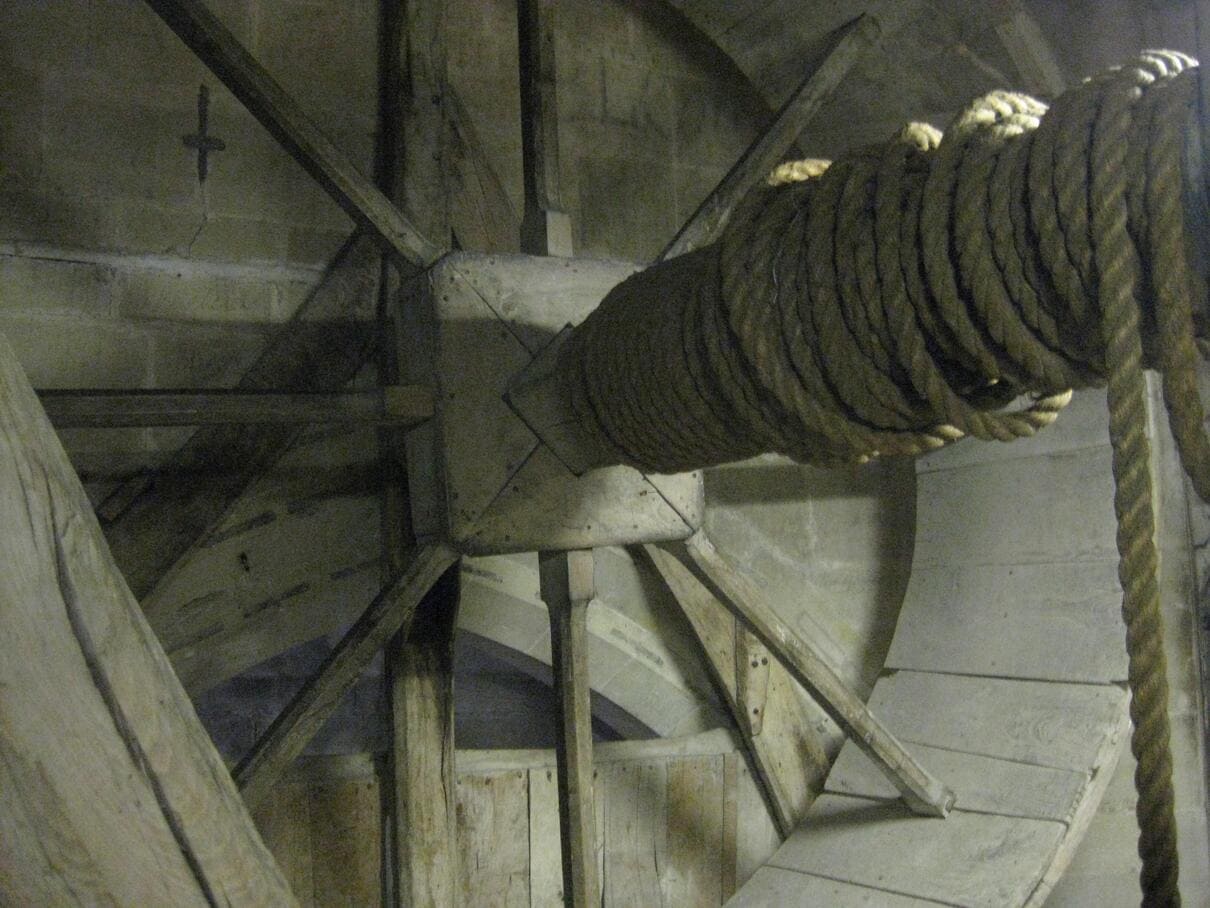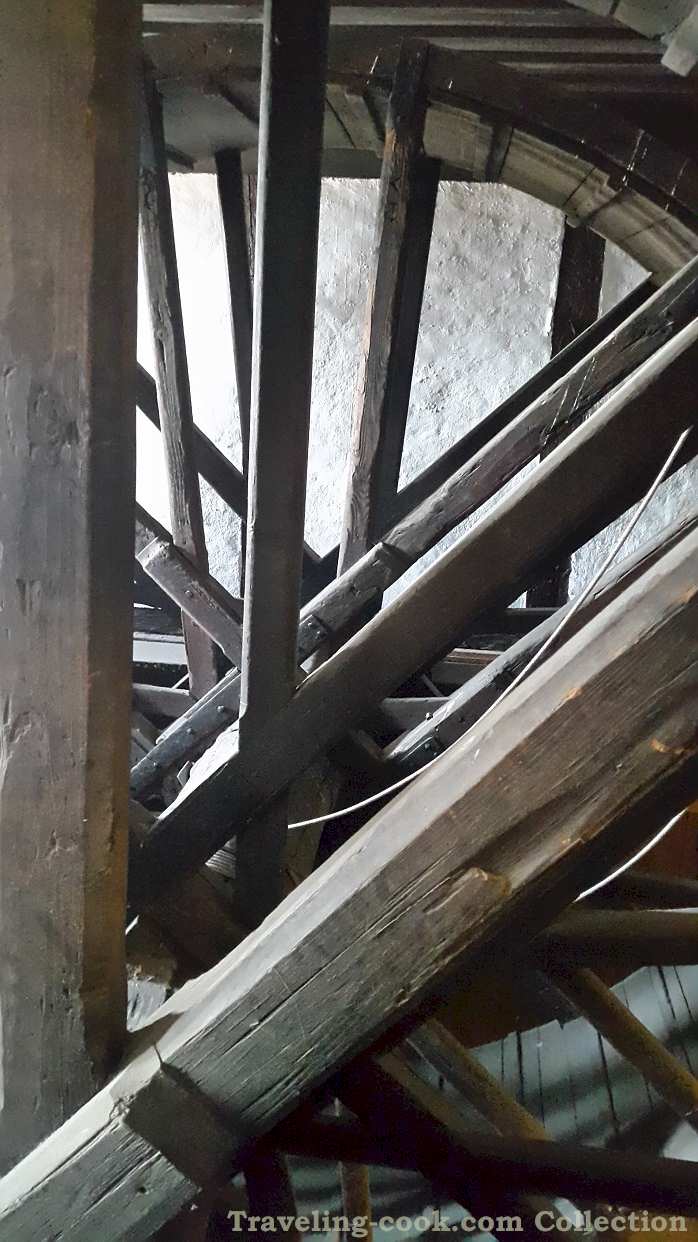Treadwheel crane on Salisbury Cathedral – England
Treadwheel on Salisbury Cathedral is from the 13th century (1220-1320.) And has the tallest tower in the UK, 123 meters (404 feet). The wheel crane is the original one used in construction. The same as the existing scaffolding on the spire tower. As the tower approached completion, the removal of the wheel crane was considered. This was quite common, as the crane can be dismantled and reused on another site. It also adds weight to the structure. But it turns out that because the crane was leaning, so much wooden shoring was added to it that it prevented its total removal. It was also partially dismantled and in its original location under the roof.


